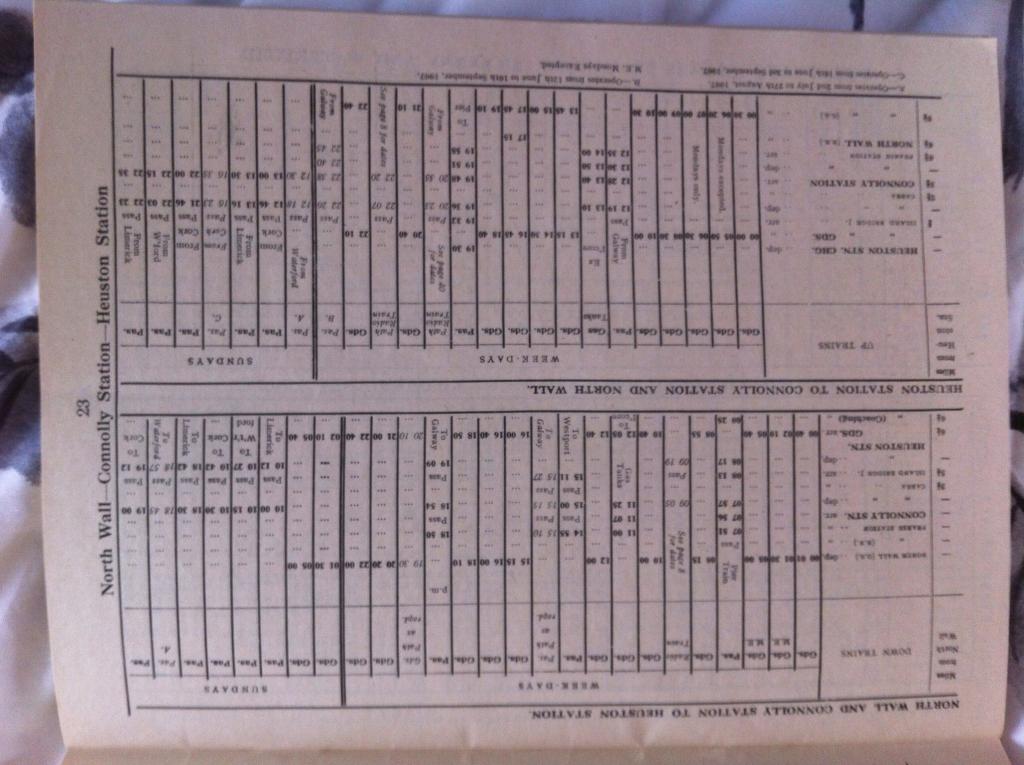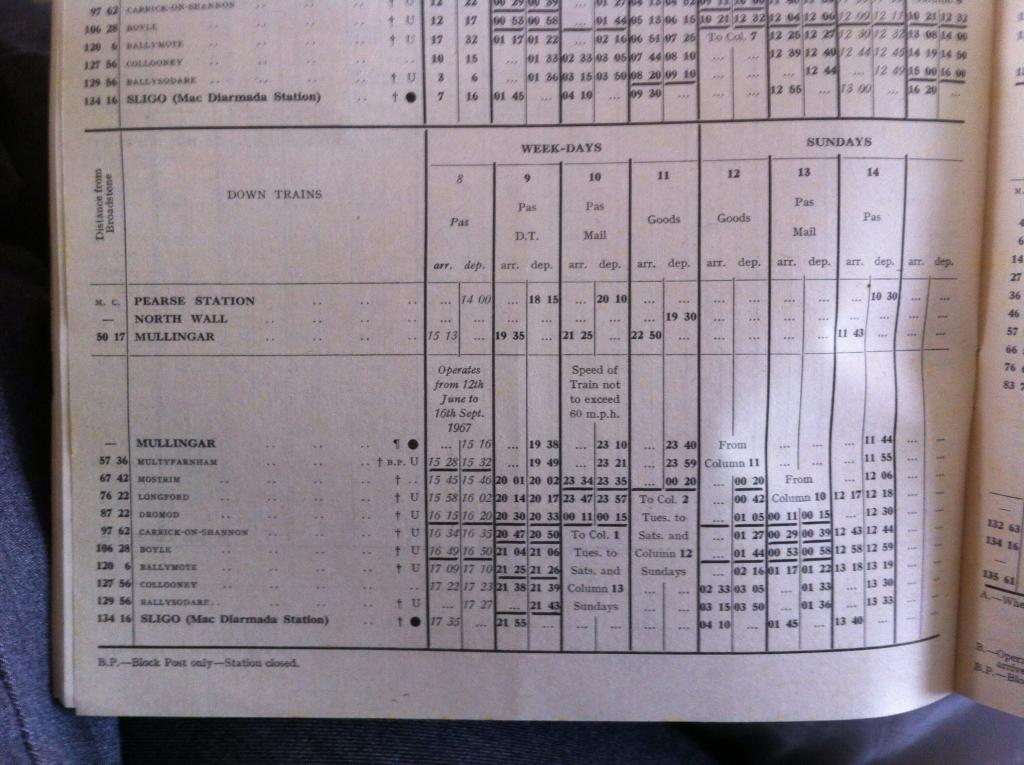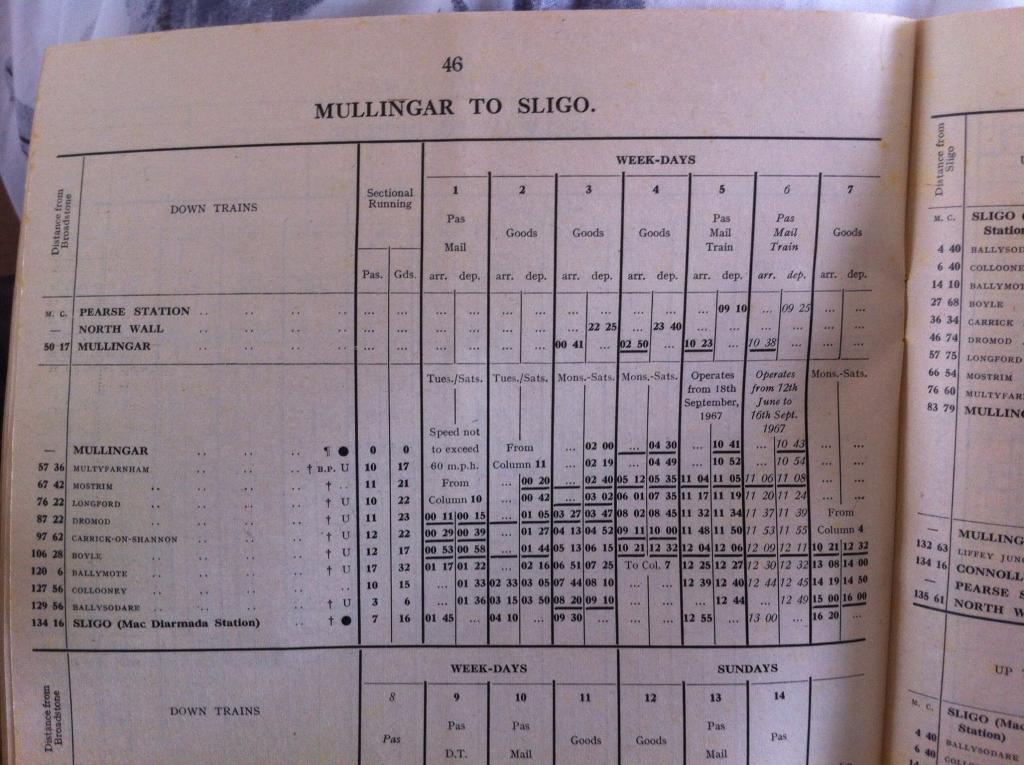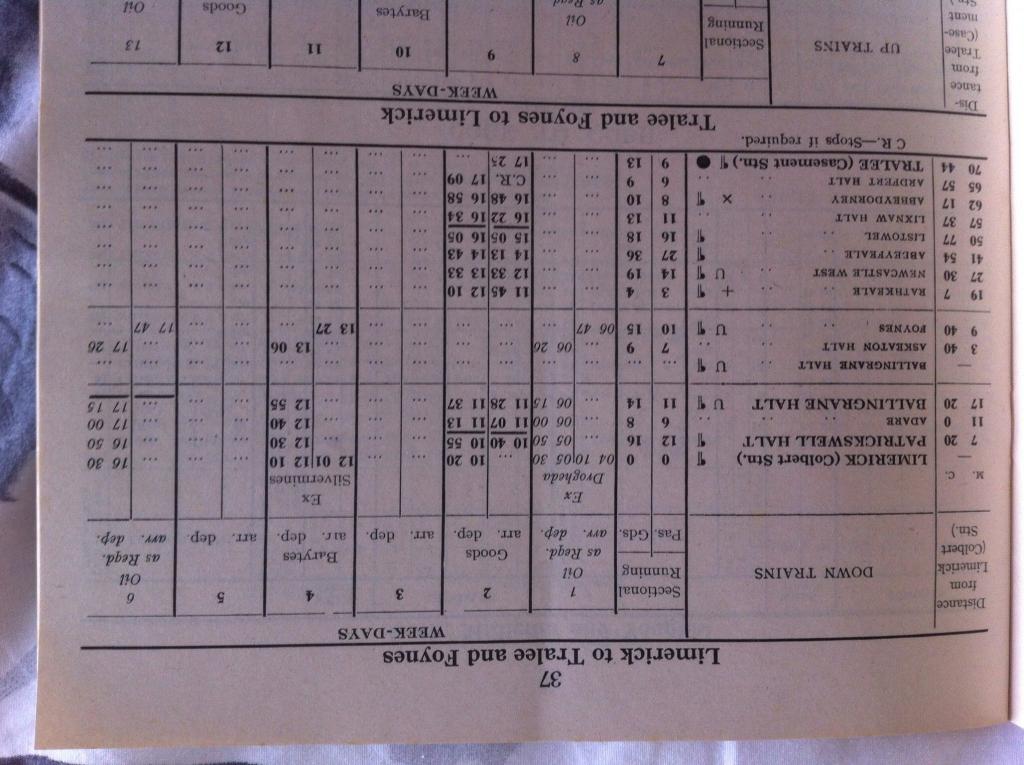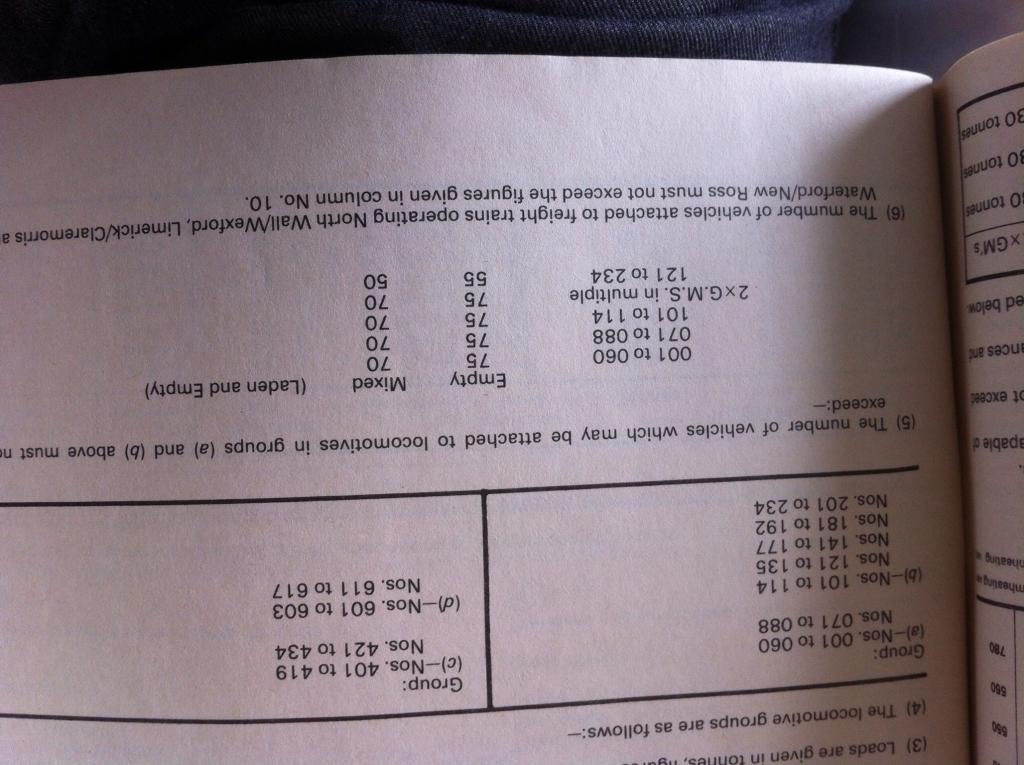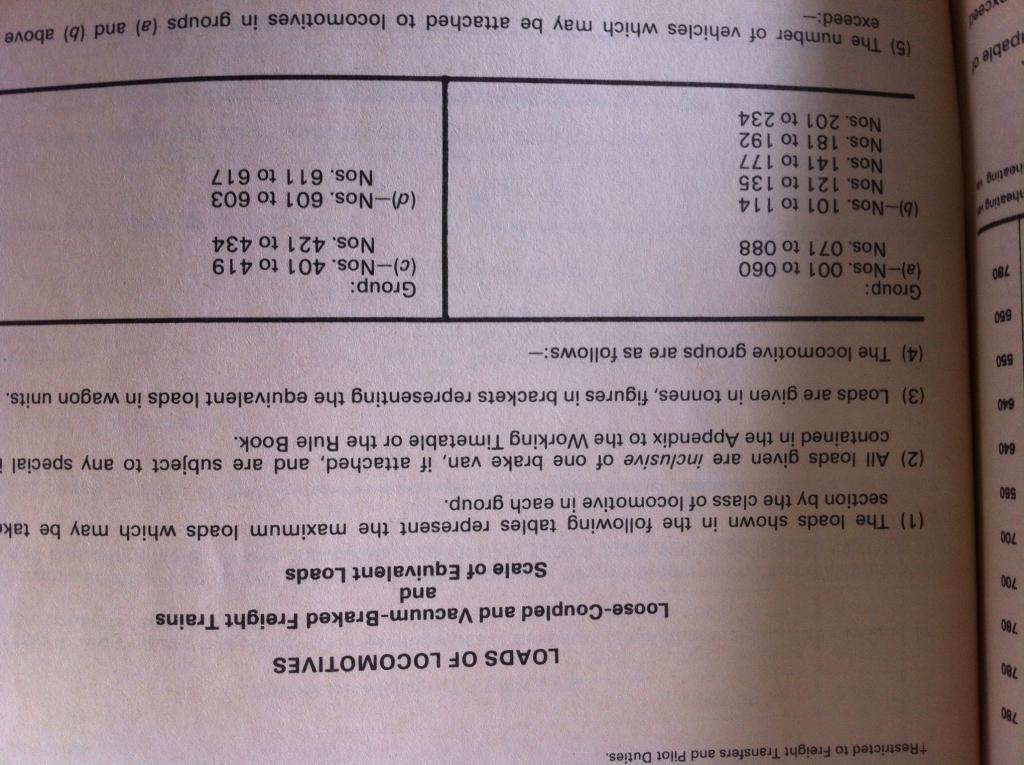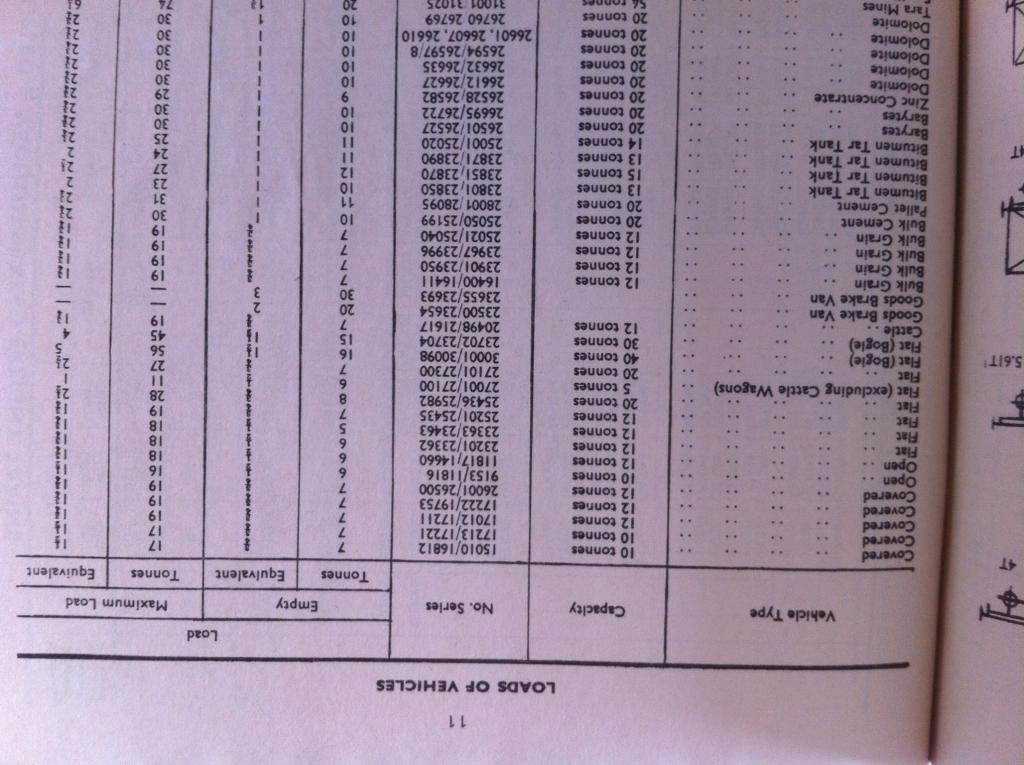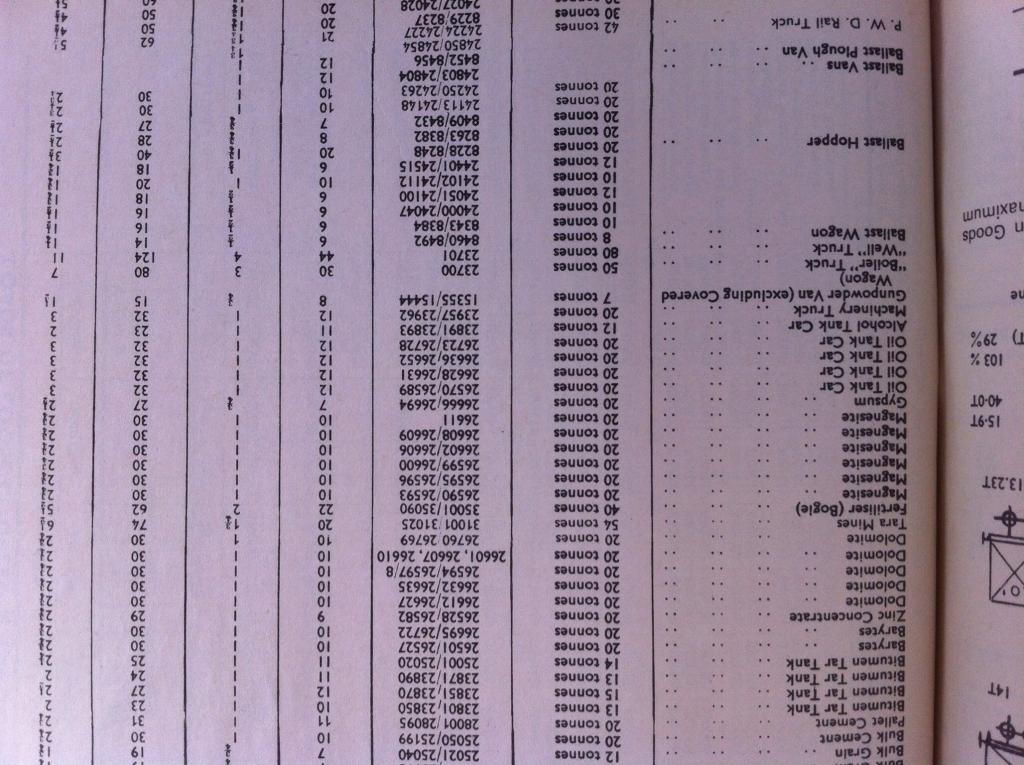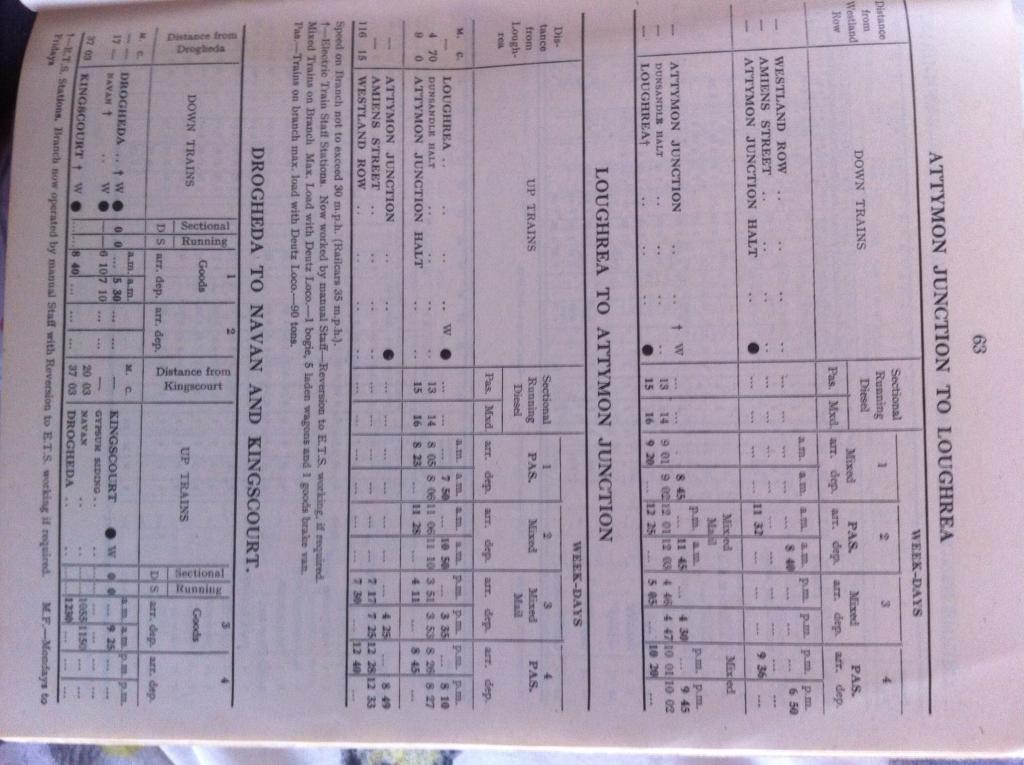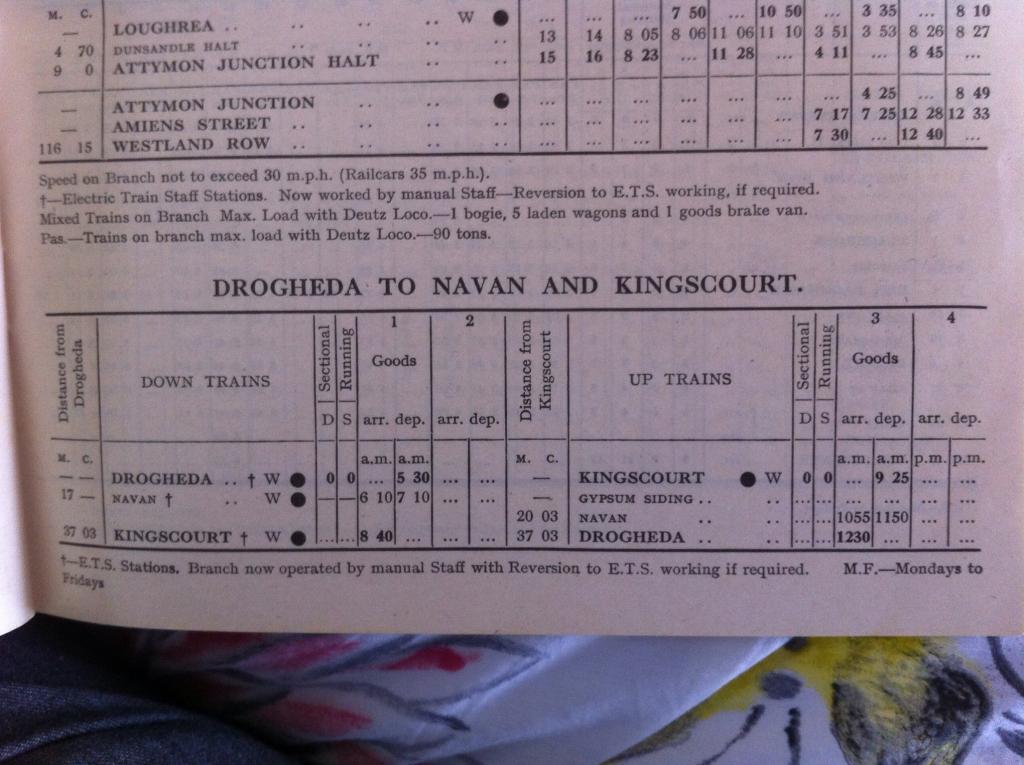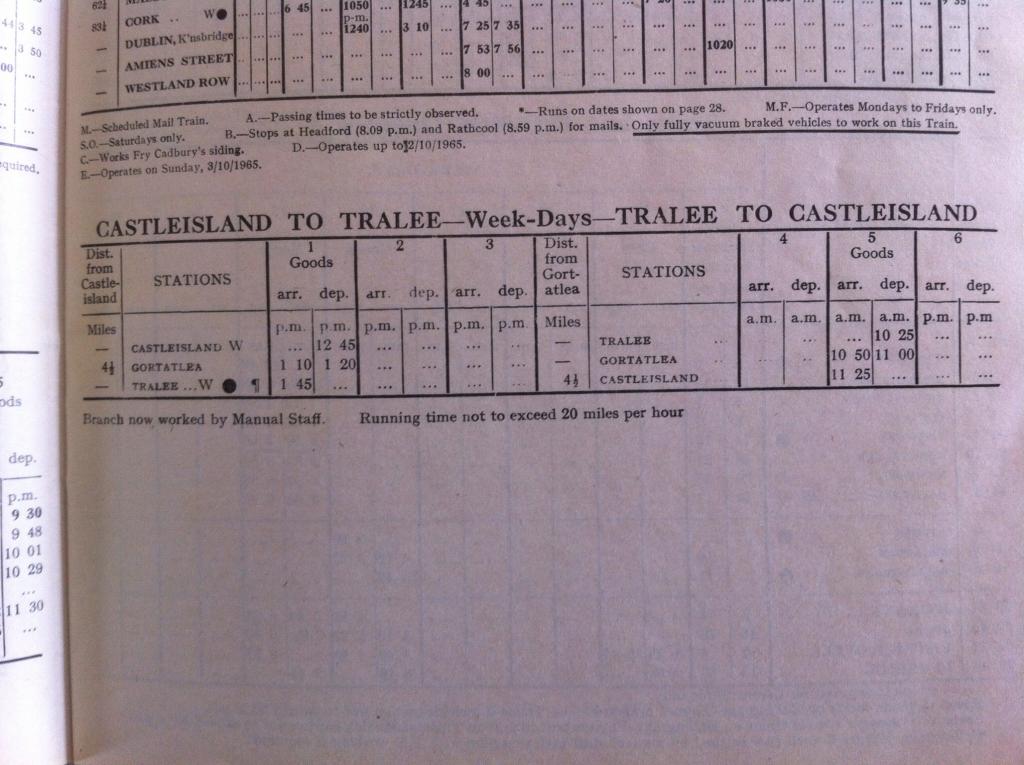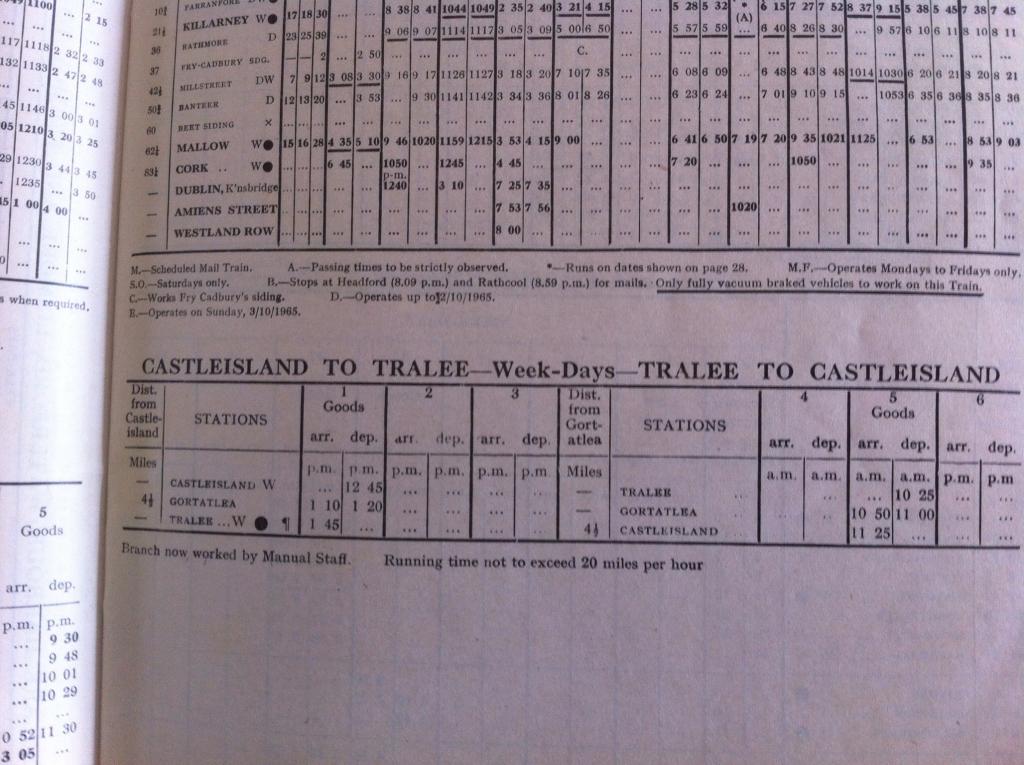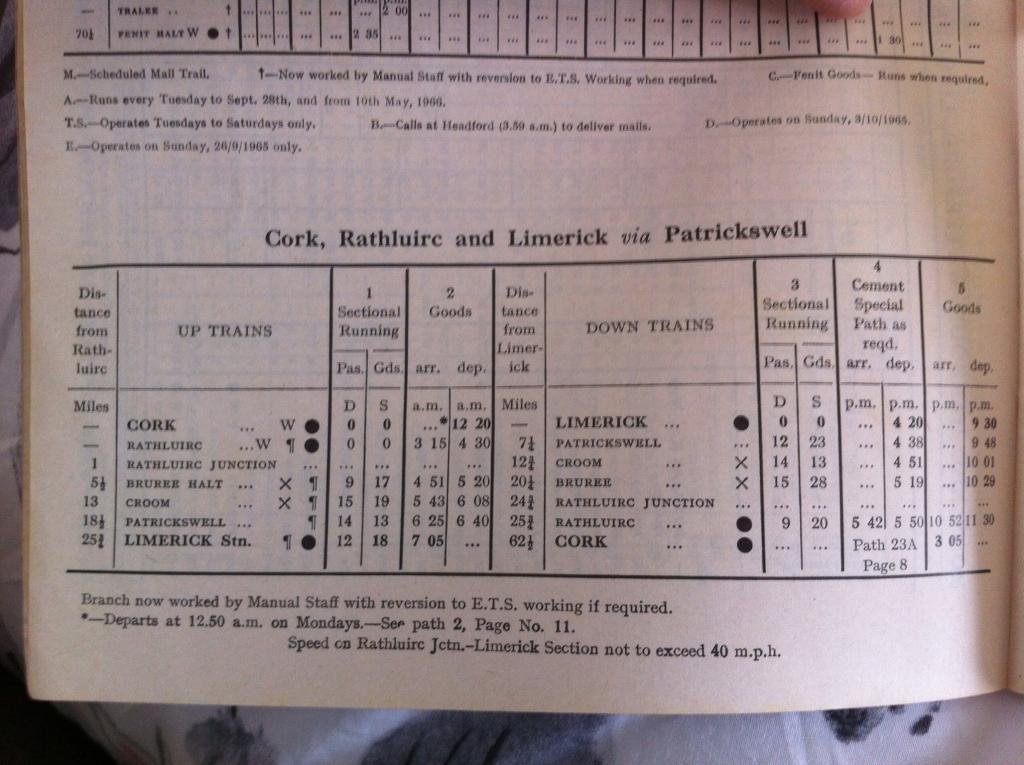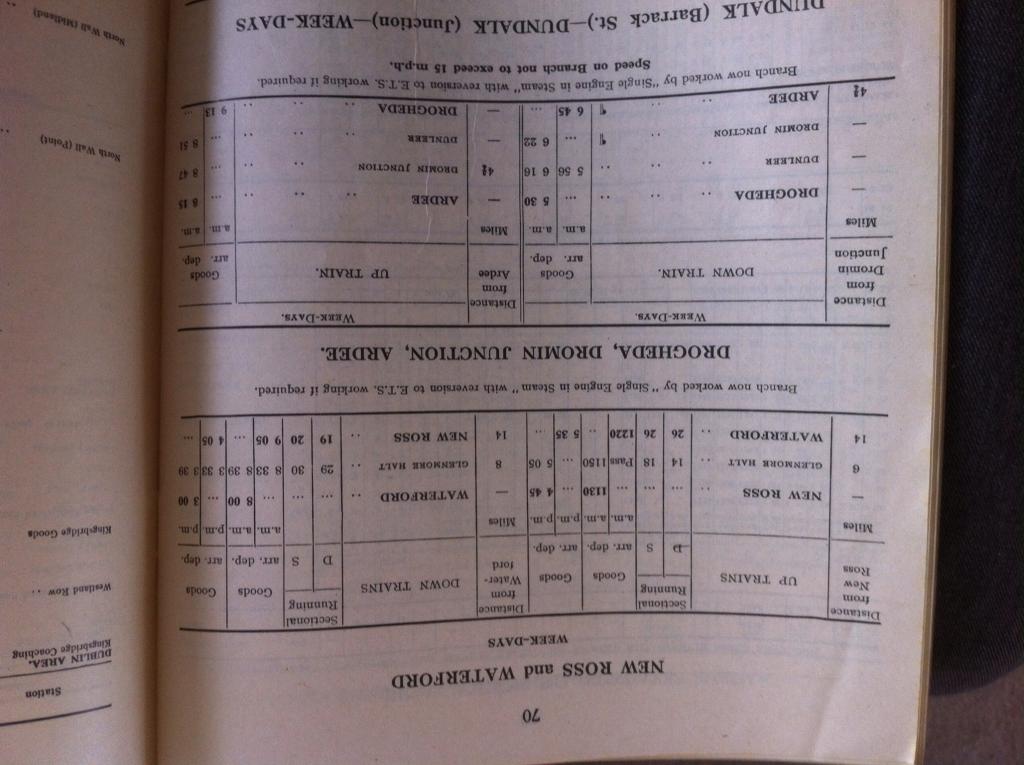-
Posts
15,684 -
Joined
-
Last visited
-
Days Won
387
Content Type
Profiles
Forums
Resource Library
Events
Gallery
Blogs
Store
Community Map
Everything posted by jhb171achill
-
I'll get a few more posted up in subsequent days. Anyone got any requests for a particular line or year? (I can only go back to 1926, though....!)
-
A "Black Five" on the scenic Ballina branch would be quite a sight!
-
Severe corrosion ..... a Mk 2 body shell ..... Never! :-)
-
Noel, I never seem to be able to get that right!
-
Dublin was also busy. Much of the inner city workings had "E" and "A" classes up front. Don't forget that for anything goods-related prior to, say, 1977 (from which year the following extracts were taken), standard CIE brake vans are all over the place. Everywhere there'll be a couple kicking about in sidings....
-
The old North Kerry goods features here; mid seventies. In the passenger world, "supertrain" liveried Mk 2 coaches (or, as universally known then, "air conditioned coaches"), shared tracks (but not train sets) with the odd remaining Bredin, laminates of all types, Cravens and Park Royals in black'n'tan. Locos were a mix - about half are still black'n'tan, the rest orange and black "supertrain" style. Only the "E" class are by now all black..... A lot of activity in and around what nowadays seems to be Cork Halt and Luas depot....
-
From 1977. In latter years, CIE / IE tended to carry pages and pages and pages of stuff not related to timetables at all; in fact for some years now they are not really "timetables" at all - they are highly detailed technical manuals for all aspects of operating the railway, timetables forming just one part. Some of those from the seventies and eighties contain information like what follows, of potentials to modellers, such as the positioning of containers of various sizes on bogie wagons. Wagon number sequences appear in the 1970s.
-
The following are also from 1965-7 and show, among other things, the daily goods train of the Croom branch which closed in 1967. Where some appear upside down, maybe Garfield could put them the right way up in case anyone thinks it's from the Australian National Railways....
-
-
On this thread, I'm planning to post occasional extracts from WTTs in order to show how the railways actually worked in the past. The intention is that this may assist modellers who wish to recreate authentic train operation practices, and to assist in showing what facilities would be needed in a model station, particularly for goods traffic. It's 40 years today since the Loughrea line closed, so let's start with that, and while this extract is from 1967, it's much the same as any year in the line's entire history!
-
Absolutely top class job, superb. Great to see IFM adding to their excellent Park Royal, Murphy's Cravens, Mayner's vans, the SSM kits - as I said before, it's great to see so many prototypical Irish coaches available now. That rake of carriages looks just like a 1971 photograph - brilliant!
-
Martello towers? Wow - a fantastic and very atmospheric addition to any Dublin based layout! Question - is there anywhere else in Ireland where a Martello tower is within sight of the railway? I don't think there is.....
-
Would anyone be interested if I scanned and posted a few extracts from 1960s / 1970s working timetables showing goods workings?
-
Just revisiting this myself - I failed to answer Jawfin's question about the D & K coach in Cultra. Cultra didn't paint it themselves; it was the way it is now way back in Witham Sreeet days, and I suspect it was painted in Inchicore before being brought north at all. It is a third, and given its origin, one would think that it could have been green; maybe that particular one had been repainted, but I don't know. I did search on a couple of occasions for definitive information on what way it would originally have been painted, but like the Ulster Railway coach at Downpatrick, no exact details appear to gave survived.
-
Excellent stuff.
-
The Official Irish 'Might Have Beens' Thread
jhb171achill replied to minister_for_hardship's topic in General Chat
True, Mayner, but the engineering heads within NIR advised purchase of several new 141 / 181 types, one reason being proven reliability and proximity of Inchicore expertise, but their masters had other ideas. -
Absolutely superb, Kirley.
-
The Official Irish 'Might Have Beens' Thread
jhb171achill replied to minister_for_hardship's topic in General Chat
I doubt it, though I suppose it's possible. For just three locos, they'd have been better buying three new ones from GM. The 181 class were only three years old then. -
The Official Irish 'Might Have Beens' Thread
jhb171achill replied to minister_for_hardship's topic in General Chat
In the late 1920s, the GSR still had all its narrow gauge lines. With the exception of the suburban (and double tracked) Cork, Blackrock & Passage line, all were rural. Carriage stock ranged from the primitive box-like 4-wheelers on the Schull & Skibbereen, to the well appointed compartment stock of the CBPR, the lengthy majestic but spartan bogies on the Cavan & Leitrim and the austere but solidly built West Clare six-wheelers. Loading gauges varied hugely, the S & S having the smallest. Against this background, the GSR proposed to build a new series of standard styled narrow gauge carriages. Drawings were prepared but have not survived. It is believed that they would have ended upon unlike the late (1958) rebuild of C & L No. 1, ie bogie stock with ran lime longitudinal seating inside, and enclosed end vestibules. Had they been built, they would have been used on the West Clare, Tralee & Dingle (possibly) and Cavan & Leitrim. The three Cork systems were soon after to go to the scrapping list. -
Photographic Website Updates
jhb171achill replied to thewanderer's topic in Photos & Videos of the Prototype
In the pic of 22 230 at Port Laoise, is that Dracula on the platform about to board? -
Forty years ago on Tuesday, CIE withdrew all services from the following routes, all of which except Loughrea were goods-only, having lost their passenger services in 1963, or in the case of Ardee, about 1933. Collooney - Claremorris (The "Burma Road") Attymon Junction - Loughrea (the last traditional country branch, last mixed trains, and last cattle traffic in Ireland) Ballingrane Junction - Listowel (Listowel - Tralee would remain (at least officially) for a short time afterwards) Dromin Junction - Ardee Rest in peace!
-
Good thinking, Leslie. Only 2-3 passengers per coach actually makes the difference - and is certainly prototypical for Ballina - Limerick - Rosslare, Nenagh, and many another sparse service in black'n'tan days!
-
Are they the Irish Freight Models ones? Absolutely TOP CLASS!!!!!! So now, the typical Irish passenger train of pre 1980 is possible in so many ways; ie no two carriages alike hardly! You could have a set containing a tin van, a couple of laminates, a Craven, a Bredin, a Park Royal, a laminate brake and a BR or Dutch Van..... I'm beginning to rethink my Austrian 009 ideas.
-
The Official Irish 'Might Have Beens' Thread
jhb171achill replied to minister_for_hardship's topic in General Chat
I think the silver and black would have suited a 201 better than an 071..... Often wondered if buses would have looked well in black'n'tan! -
The Official Irish 'Might Have Beens' Thread
jhb171achill replied to minister_for_hardship's topic in General Chat
A 141 in NIR maroon, had they listened in 1968/9 to engineering people instead of buying the "Hunslets" for political reasons? That was actually a possibility, and one preferred by their loco people as the Hunslets turned out to be a bad buy, underpowered for what they were required to do.
.png.c363cdf5c3fb7955cd92a55eb6dbbae0.png)



